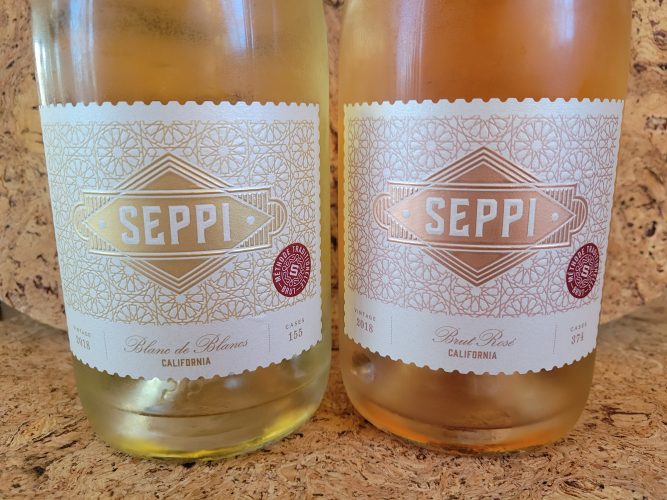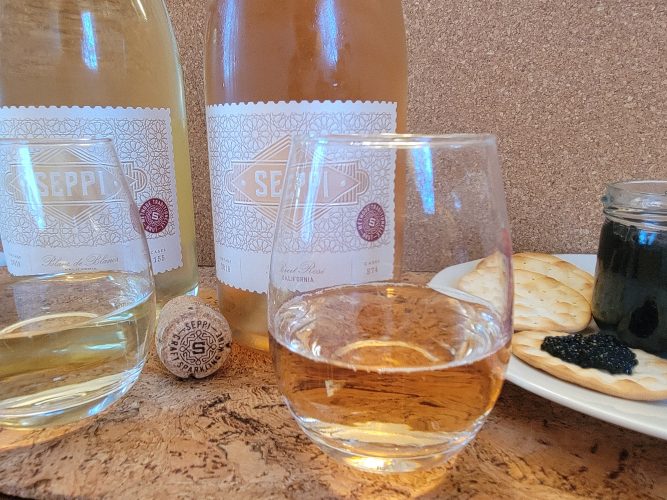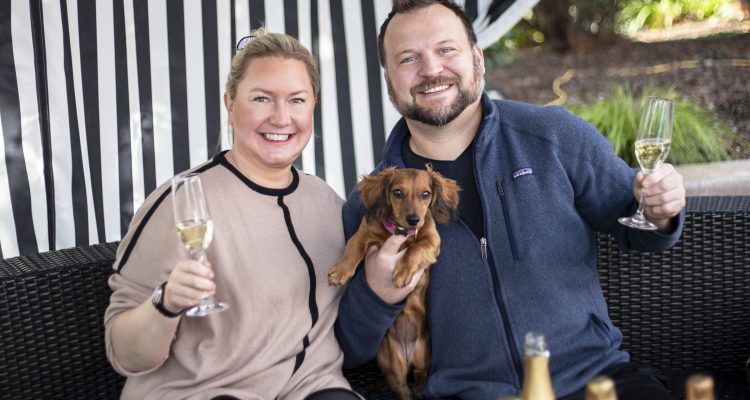Why did someone decide to make this particular wine?
Usually we’re more focused on whether or not to buy a bottle, not on its origin story. With Seppi wines, the bottles are lively and attractive, as are the wines inside. But where did they – and the winery concept – come from?
Seppi is a work-in-progress, according to owner Kelsey Phelps. Originally from Napa, she went to the East Coast for law school, then worked in government and corporate law. In her early 30s she had one of those “What am I doing with my life?” moments and decided to return to her roots in Napa, where her grandfather had founded the iconic Joseph Phelps winery 50 years earlier.
Kelsey relates that, growing up amid Napa wineries, she didn’t really appreciate the beauty and the lifestyle she was surrounded by – and, of course, as a child, she didn’t drink. Some years later she, like many other children and grandchildren of winery founders, found herself drawn back home. She told me about seeing a documentary made about young winemakers who decided to return and take up their legacies, where one of them said “you can’t really ever leave,” and this became true for her.
PHELPS HISTORY
Personally, Joseph Phelps was the first winery I ever visited in Napa – a private visit before they opened to the public, and of course I’ve kept my eye on Phelps ever since. I first noticed the rich dessert wines – a special interest of mine – which they had started producing in the1970s. That was also when most of the rest of the world started noticing Joseph Phelps’ complex and satisfying, signature red blend: the amazing (now highly allocated) Insignia wine. Insignia, along with the other Phelps wines, earned such acclaim that the winery was eventually acquired by French luxury conglomerate LVMH, in 2022.
SEPPI STARTS UP
A few years before the pandemic, Kelsey relates that she “took her small savings” and started Seppi, which is named for her grandfather, Joseph Phelps. Seppi is the nickname for Giuseppi – Joseph in Italian; her grandfather loved all things Italian so his grandkids called him “Seppi.”
After analyzing the market, Kelsey decided to focus on sparkling wine. Unlike a few decades ago, sparkling wine has now become an everyday drink for wine consumers, and the industry projection is for this increase in consumption to continue.
For Kelsey’s boutique sparkling winery, she decided to source grapes from specific vineyards. Current vintages are blends, but she is heading toward becoming her own version of what she describes as “a Champagne grower-producer” with single-vineyard bottlings in the future, all vintage dated.
Seppi’s first vintage was 2017. Then the pandemic delayed her sparkling wine releases – now available from the winery – so they remained en tirage (developing on the yeast) for several more years of enrichment than she had originally intended. In the interim, Kelsey also fell in love and got married (to Matt), and she did share a personal goal with me: to eventually have six miniature dachshunds, having also fallen madly in love with her first mini-dog Layla Peanut.
SEPPI SPARKLING WINES TODAY

Back to Seppi: at present, the wines are available online and in a few local restaurants. Producing only about 500 cases initially, Kelsey plans to ramp up to 1,000 cases soon. She wants to stay small, a kind of “if you know, you know” fun sparkling wine – but you have to “know” first, she points out. Online, the 2017 and 2018 vintages are available with prices ranging from $48 to $75; some are sold out.
Both of Kelsey’s current releases are chardonnay, with 5% pinot noir added to the rosé primarily for texture and color, not for added mid-palate, she explains. I enjoyed sipping the dry, minerally 2018 Seppi Blanc de Blancs on its own, and Kelsey favors it paired with sushi –which I unfortunately didn’t happen to have on hand when I sampled it.
Kelsey likes the 2018 Seppi Rosé as an aperitif wine, and it is a lovely color; pictured the rose-peach wine in the glass, out on the terrace at the end of the day. I went a step further and served it with vegan caviar on plain table water crackers, and the slight additional textural mouthfeel of this wine paired well with the light bite.


